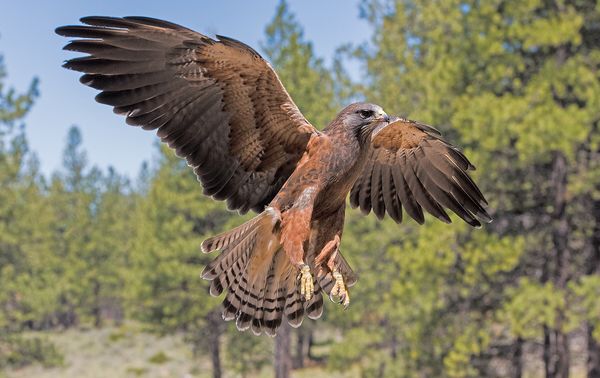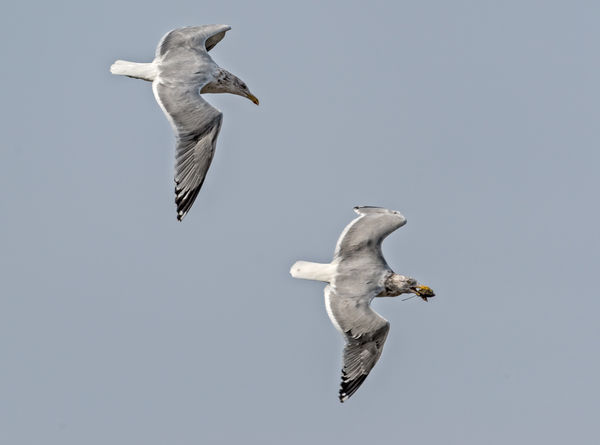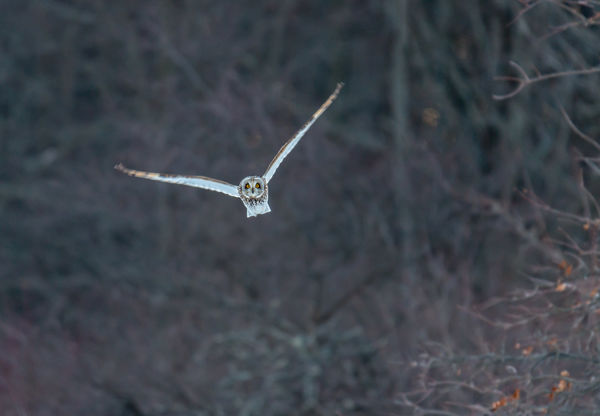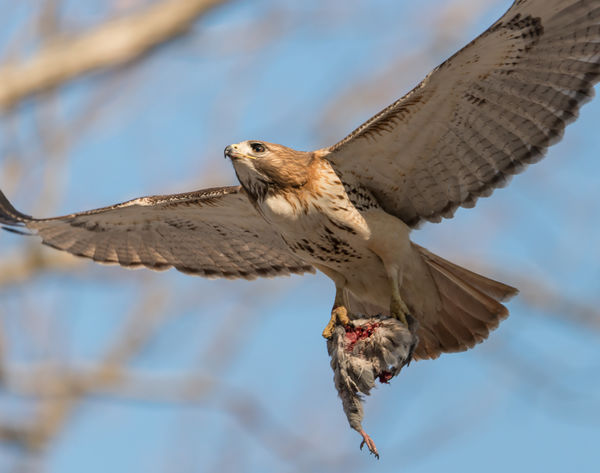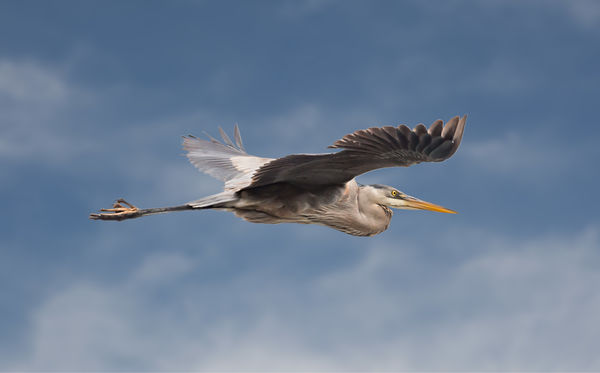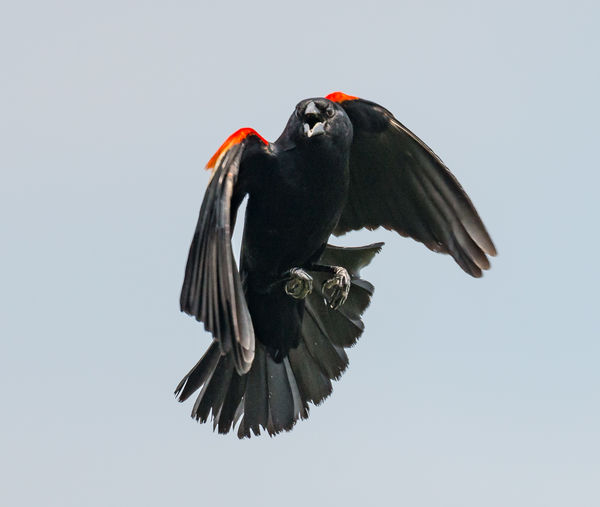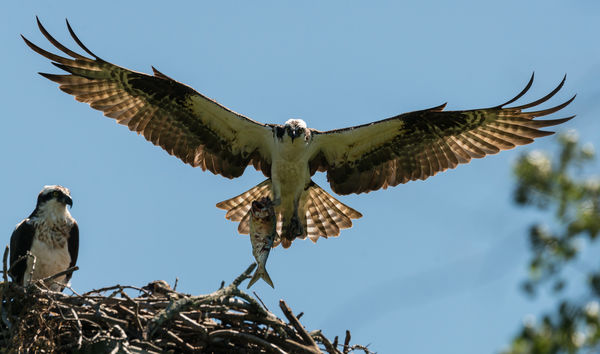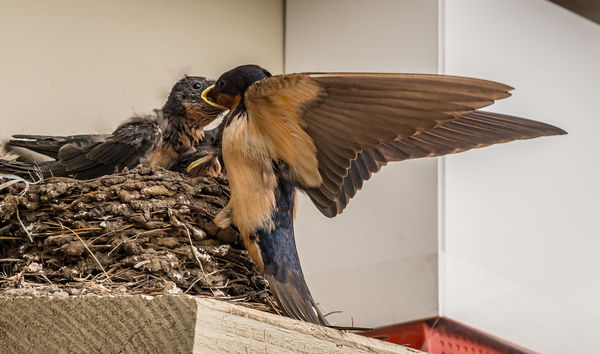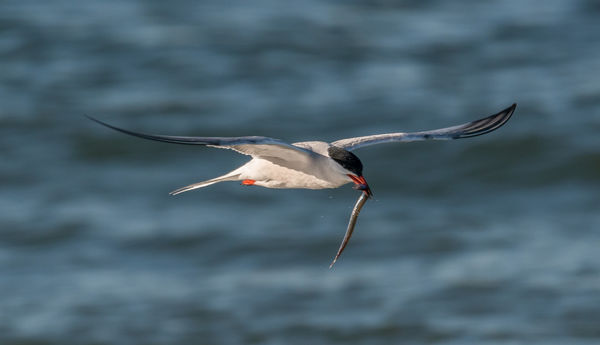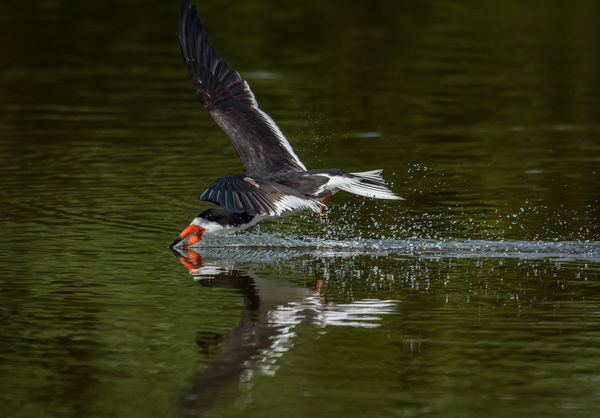Serious BIF'ers Please Reply
Apr 12, 2018 17:31:10 #
TomV
Loc: Annapolis, Maryland
I get more success with BIF shots using primes (400, 500 and 600) with focus limiting and fast AF speeds. Though zooms have been suggested, the focus limiting should be a feature.
I now have the 500 only since it a compromise in size and better quality that the the other 2 I sold. I have no problem using it an a gimbal/tripod combination since I use it in either an open area or for stationary birds.
While in the woods, I will use a 70-200 f/2.8 for low light conditions and a wide range of subject distances. If I know the area, then my 300 f/2.8 can be used for further subjects, though it is a fairly heavy lens. I am usually not satisfied with in-the-woods shots with apertures smaller than 4.5.
I now have the 500 only since it a compromise in size and better quality that the the other 2 I sold. I have no problem using it an a gimbal/tripod combination since I use it in either an open area or for stationary birds.
While in the woods, I will use a 70-200 f/2.8 for low light conditions and a wide range of subject distances. If I know the area, then my 300 f/2.8 can be used for further subjects, though it is a fairly heavy lens. I am usually not satisfied with in-the-woods shots with apertures smaller than 4.5.
Apr 12, 2018 17:40:37 #
300mm or longer lens. F11 shutter 2000 Auto iso. White balance for conditions. No tripod.
Apr 12, 2018 18:17:42 #
via the lens wrote:
Wow, thanks for that! I just love taking photographs and love photographing action animal shots. I study about photography a lot and believe that good photography is a combination of equipment and knowledge so I try to keep on learning (as I already have the right equipment). Again, thank you.
Maybe those BIF photographer wanna bes can learn from you by getting the right equipment and then learning how to use that equipment! Never stop learning!
Apr 12, 2018 20:20:28 #
Jerrin1 wrote:
Before you opt for a longer lens you might conside... (show quote)
Jerrin1, Great advice. Makes a lot of sense. Much like my lack of adventure when it comes to high ISO, I've always steered clear of the idea of teleconverters. Not sure what my bias was but I'll consider it along with the other good advice I've gotten.
Thanks
Apr 12, 2018 20:32:29 #
sathca wrote:
Nikon D750, Hand held, 2000-2500 sec shutter speed, continuous group ( 9 point ) auto focus, auto iso( watch the “minimum shutter speed” setting ). I use a Nikon 200-500 5.6, Nikon 300 AF-S f-4 and lately been trying out a Tamron 150-600 with good results. I find a tripod restrictive and with those shutter speeds I get the gleam in there eyes you’re looking for! Also, you have to go to where they are ....research!
sathca, thanks for the good advice, especially regarding the 9-point auto focus. I've heard that before but had forgotten.
I'm gonna demand that gleam now.
Thanks
Apr 12, 2018 20:38:19 #
the f/stops here wrote:
I'm not sure what you're looking for but here's my take on my favorite BIF photos. It's capturing images of the birds (I like Sandhill Cranes) flying in front of the full moon. I use a cropped sensor Canon body with either a 400mm or 600mm lens. That equipment sits on heavy Gitzo sticks with a Wimberely Gimble head II. I'm in a chair hoping the clouds don't show up. The most difficult technique of this photography is capturing the birds in focus and not the moon. Here's a few examples.
Several members have mentioned patience as the #1 virtue when it comes to this subject. I can't imagine how much it required for you to capture these beautiful, almost surreal images. I would think that chair would have to be really comfortable

Thanks much for the information.
Apr 12, 2018 20:40:12 #
DanielB wrote:
For me I use an IS lens hand held or Mono pod and wide open at at least 1/1000 sec and evaluative metering mode. I usually use my 100-400mm f/4.5-5.6L IS but will also use my 70-200mm f2.8 II IS for coastal birds.
Nice shots. Obviously what you are doing is working well
Thank you.
Apr 12, 2018 20:54:51 #
TomV wrote:
I get more success with BIF shots using primes (40... (show quote)
TomV, good advice, thanks. I sometimes forget about the focus limiter on my 70-200 2.8. I definitely will experiment with that. I also agree that a prime would be the preferred way to go.
Thanks for the reminders.
Apr 12, 2018 21:05:56 #
jack schade wrote:
300mm or longer lens. F11 shutter 2000 Auto iso. White balance for conditions. No tripod.
jack, that is an astounding shot. At f/11 with a shutter speed of 2000, I can't imagine what your ISO was (8,000-10,000?) but even on closeup download I see absolutely no noise. It looks like you've used extensive PP but where's the noise.
If someone asked me what I wanted to ultimately accomplish with BIF I would say: That's it! That bird has got to be hanging on your wall somewhere.
Thanks much.
Apr 13, 2018 05:48:10 #
Raz Theo wrote:
Before I give up on achieving the kind of quality ... (show quote)
Steve Perry is a master at this and can answer all your questions.
Apr 13, 2018 06:02:32 #
Raz Theo wrote:
Before I give up on achieving the kind of quality ... (show quote)
There are three dimensions to your question, which distills down to How do you take reliably good birds in flight pictures?
(1)Gear, (2)Finding subjects, (3)Actually taking the pictures
Gear. It can run the gamut from a small sensor camera (bridge camera) with a long focal length and decent AF performance to a high megapixel full frame camera with a 600mm or longer lens. Longer focal lengths are usually bigger and heavier and are less hand-holdable, so a monopod or a tripod with gimbal works best to relieve strain on your body parts. I have used a Simga 50-500, Nikkor 80-200 F2.8 with a 1.4 TC, Nikkor 80-400, Nikkor 600mmF4 with and without a 1.4 TC, Sigma 100-300 F4, Sigma 150-600 Sport. I have used the following cameras - D70S, D200, D300, D700, D3S, D700, D800 and D810. My best results for flying birds were when I used a lens and body that was light enough for hand holding. Also, higher mp cameras are more desirable than lower resolution cameras, so that you can crop more to tighten your compositions. Tripod mounting is fine, but it adds another 7 lbs on average to the gear you carry. I have had some success with a Sony RX10M4, as it has a great AF system, but I have not taken many birds in flight with it yet. Extra memory cards and batteries are always helpful.
Finding Subjects. This is seldom discussed in any amount of detail but is as important as having a camera and lens. There are a number of Yahoo Groups, birding blogs and twitter feeds that bird watchers share among themselves. These are a total goldmine as far as learning about who's in town, where, and what times. These online resources are my go-to, in addition to some locations that I have gone to in the past that have proven successful. In the NY Metro area there is a yahoo group called ebirdsnyc, and twitter users like Manhattan Bird Alert (BirdCentralPark) that routinely post extremely useful information. Local Audubon groups also sponsor bird walks and meetups. We also have several rare bird alerts, one which is tied to ebirdsnyc, and there are many online birdwatching resources like www.birdsonthenet.org. But don't expect to see detailed location of certain solitary birds, especially owls. The details of these locations are only shared among birding people, which usually carry binoculars or spotting scopes instead of cameras. Some birders are excellent photographers. One thing will lead to another on the internet, so eventually you will land on Facebook, where you will see a wealth of information, pictures, etc.
Actually Taking Pictures. This is where you will see a lot of personal favorite techniques. It's always good to find out what works for others. The specifics are based on your gear choices. If you have a Nikon D700 for instance, you can do a google search for shooting wildlife or birds with a D700. Try those suggestions to start, but don't be afraid to experiment. The usual general rules apply - meter carefully, use fast shutter speeds, anything from wide open to F8 for aperture, and the lowest ISO that can help you get good exposures. Personally I use spot metering and manual exposure settings for 85% of my birding photography. I measure the reflected light for the worst case scenario - highlights - and 1 stop (ore a little more) to the reading to ensure I am exposing as much as possible without blowing the highlights. It's far easier to fix underexposed shadows than to try and recover a blown highlight.
Being in a blind is always great. Bring lunch and be prepared to spend many hours without moving. Birds have amazingly short memories, and once you are there for a while, you will cease to be something to avoid. You can be in a thicket, a small hut, a car, etc - whatever works. Don't expect a keeper rate that is more than 10%. You may end up taking 30 or 40 shots of a single bird, even one that is perched, and one or two, sometimes as many as 5, will have the position, focus, frozen movement (or not), lighting and exposure that makes it a keeper. The rest will be either duplicates or less than desirable for one reason or another. When someone posts that they have a 90% keeper rate - I usually laugh, because they are either shooting birds in a zoo, or have a very low standard for quality.
Look for birds doing something unusual - feeding, mating if it's spring, interacting with other birds or animals, etc. A bird shot in a context are more interesting than a bird against a blank sky. The hardest shots to get, when you are shooting a bird against a busy but out of focus background, are always great when you can get them. Crazy amazing detail is cool, but often doesn't make for interesting photos. But it does allow the photographer to show off his gear and technique. A little wider view and context usually makes for a better picture.
These are a few from recent outings over the past few years:
Apr 13, 2018 09:52:09 #
the f/stops here wrote:
I'm not sure what you're looking for but here's my take on my favorite BIF photos. It's capturing images of the birds (I like Sandhill Cranes) flying in front of the full moon. I use a cropped sensor Canon body with either a 400mm or 600mm lens. That equipment sits on heavy Gitzo sticks with a Wimberely Gimble head II. I'm in a chair hoping the clouds don't show up. The most difficult technique of this photography is capturing the birds in focus and not the moon. Here's a few examples.
I especially like your first photo, I think the landscape is distracting in the second. But great shots both of them. But what I’d like to know is how you got the shot that is next to your user name. There is probably some valuable lesson to that one!
If you want to reply, then register here. Registration is free and your account is created instantly, so you can post right away.

